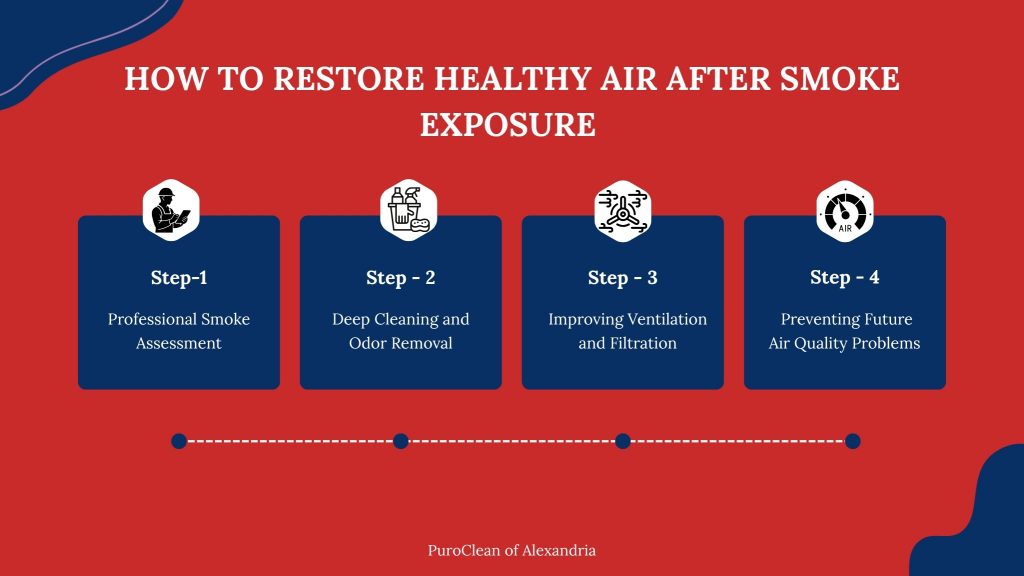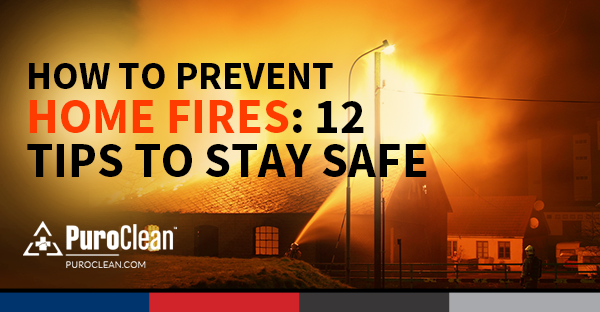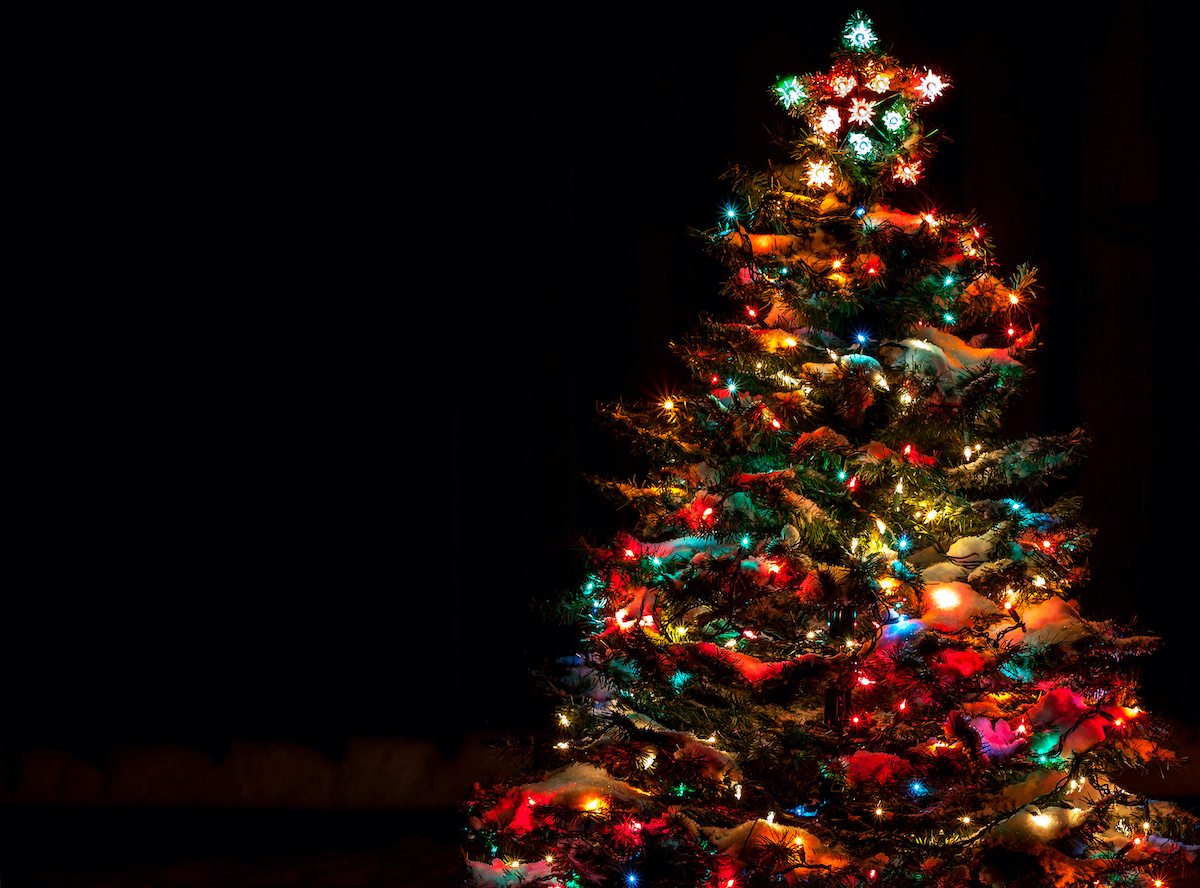Even after the last flame dies out, what lingers inside a home can be far more harmful than the fire itself. The air you breathe becomes tainted with microscopic particles, toxins, and odors that silently move through every corner. Homeowners in Alexandria often realize that the aftermath of smoke isn’t just about stains and smells; it’s about the unseen effects on health, comfort, and air quality. Understanding how smoke behaves inside your home helps you take control of what is invisible but dangerous.
Understanding the Connection Between Smoke and Indoor Air Quality
Smoke from a house fire is more than a mix of soot and smell. It’s a complex combination of carbon, chemicals, and microscopic debris that interacts with the air in unexpected ways. These particles can stay suspended for days, gradually embedding themselves in soft surfaces and the ventilation system. According to the U.S. Environmental Protection Agency (EPA), fine smoke particles can remain airborne for long periods, significantly lowering indoor air quality and posing health risks if not properly filtered.
What Happens When Smoke Enters Your Home
When smoke drifts through your home, it doesn’t stay in one place. It travels freely through tiny openings, spreading contamination to every surface. Even after cleaning visible residue, fine particles keep circulating indoors.
Here’s what happens next:
- Smoke moves through air ducts, carrying toxins into every room.
- Soot clings to walls, ceilings, and even electrical fixtures.
- Carpets, curtains, and upholstery absorb odor-causing residues.
- HVAC filters quickly clog, reducing air circulation and trapping harmful particles.
- Hard surfaces become coated with sticky films that are hard to remove.
Restoring freshness means more than scrubbing; it’s about treating the air itself. Without addressing the air, smoke damage air quality Alexandria, problems tend to return again and again.
Why Alexandria Homes Are Especially Vulnerable
Alexandria’s weather and architecture make its homes particularly sensitive to smoke’s aftereffects. Humid summers and older buildings with intricate layouts allow contaminants to hide deep within walls and vents. The combination of moisture and lingering soot can worsen indoor pollution over time.
Common reasons local homes face more challenges:
- Humidity allows residue to settle deeper into materials.
- Brick and wood structures absorb odors more easily.
- Older HVAC systems struggle to filter fine particles.
- Closed windows during colder months trap polluted air inside.
- Limited airflow in historic homes slows natural ventilation.
Addressing these factors early helps prevent long-term exposure and supports effective air purification after fire. Even small steps, like improving ventilation, can make a noticeable difference in Alexandria’s unique climate.
How Smoke Damages Indoor Air Quality Step-by-Step
The damage smoke causes doesn’t happen at all at once. It’s a slow, layered process that starts within minutes and continues long after the fire is gone. Each phase leaves behind particles and gases that weaken your home’s air quality. Over time, this contamination leads to breathing difficulties, skin irritation, and stubborn odors that simple cleaning can’t resolve.
Step 1 – Infiltration
Smoke spreads rapidly, traveling through walls, cracks, and ventilation ducts. It moves faster than most people realize, carrying microscopic soot and chemicals that infiltrate hidden spaces. By the time the air seems clear, residue has already settled where you can’t see it. For smoke damage air quality Alexandria, this early stage is when most of the long-term contamination begins.
Step 2 – Absorption
Porous materials such as drywall, carpet, and fabrics trap smoke particles deep within their fibers. These materials act like sponges, holding onto toxins and odor molecules. Even washing or wiping doesn’t fully remove them. This is when air purification after fire becomes critical; it targets airborne particles that surface cleaning can’t touch.
Step 3 – Lingering Odors and Hidden Hazards
Weeks later, odors can return without warning. That’s because heat and humidity release trapped particles back into the air. Prolonged exposure may cause coughing, headaches, or worsening allergies. Taking steps to restore smoke damage air quality Alexandria at this stage is about more than comfort; it’s about protecting your health from invisible irritants that persist indoors.
How to Restore Healthy Air After Smoke Exposure
Bringing clean air back into your home takes a combination of professional treatment and smart prevention. It’s not just about removing what’s visible; it’s about neutralizing what’s unseen. When handled properly, you can restore your home’s comfort and reduce future risks from lingering pollutants. For a deeper look at how experts manage structural recovery and repair after smoke and fire incidents, you can read our related blog on how restoration experts help rebuild homes.
Step 1 – Professional Smoke Assessment
The first step is an inspection from experts trained to detect airborne contamination. Using tools like particle counters and air quality sensors, professionals locate where toxins have spread. This early assessment helps determine the level of cleanup needed and guides effective air purification after fire strategies for your specific home layout and ventilation system.
Step 2 – Deep Cleaning and Odor Removal
After identifying problem areas, cleaning begins with HEPA vacuuming and chemical-free treatments that safely break down soot. Specialized equipment like ozone generators or hydroxyl machines helps neutralize odor molecules. In cases of severe contamination, some materials may need replacement to prevent recontamination. This phase plays a key role in improving smoke damage to air quality Alexandria by addressing both surfaces and air together.
Step 3 – Improving Ventilation and Filtration
Once cleaning is done, enhancing airflow is essential. Installing HEPA filters, running dehumidifiers, and keeping windows open when the weather allows all help clear residual particles. Regular maintenance of HVAC systems ensures that new contaminants don’t circulate back into your living space. Consistent air purification after fire efforts can keep your indoor environment safe long after the restoration process ends.
Step 4 – Preventing Future Air Quality Problems
Prevention goes a long way toward keeping your air fresh. Regularly replace HVAC filters, schedule annual duct inspections, and use air purifiers suited for your home size. Avoid synthetic air fresheners that only mask odors instead of eliminating them. A proactive approach ensures that smoke damage air quality Alexandria issues don’t return, and your home remains a healthy space for everyone.

Conclusion
The true damage of a fire often begins after the flames are gone. Smoke seeps into every surface, altering the very air you breathe. Addressing smoke damage air quality Alexandria isn’t just a cleanup task; it’s an essential step toward restoring comfort and health at home. With the right combination of professional help and practical maintenance, you can clear the air and reclaim your living space with confidence.
FAQs
Q1. How long does smoke stay in a house after a fire?
A: It can linger for weeks or even months if not treated properly. The tiny particles continue circulating in the air and settling on surfaces. Using expert air purification after fire methods helps remove them much faster.
Q2. Can I clean smoke damage myself?
A: Light surface residue can be wiped, but deep contamination needs professional tools and filtration systems. For lasting smoke damage air quality Alexandria, trained specialists should handle air and material restoration.
Q3. What’s the best way to improve indoor air after a fire?
A: Start with ventilation and cleaning, then use purifiers designed for smoke removal. Professional air purification after fire ensures every layer of your home’s air is thoroughly restored.



